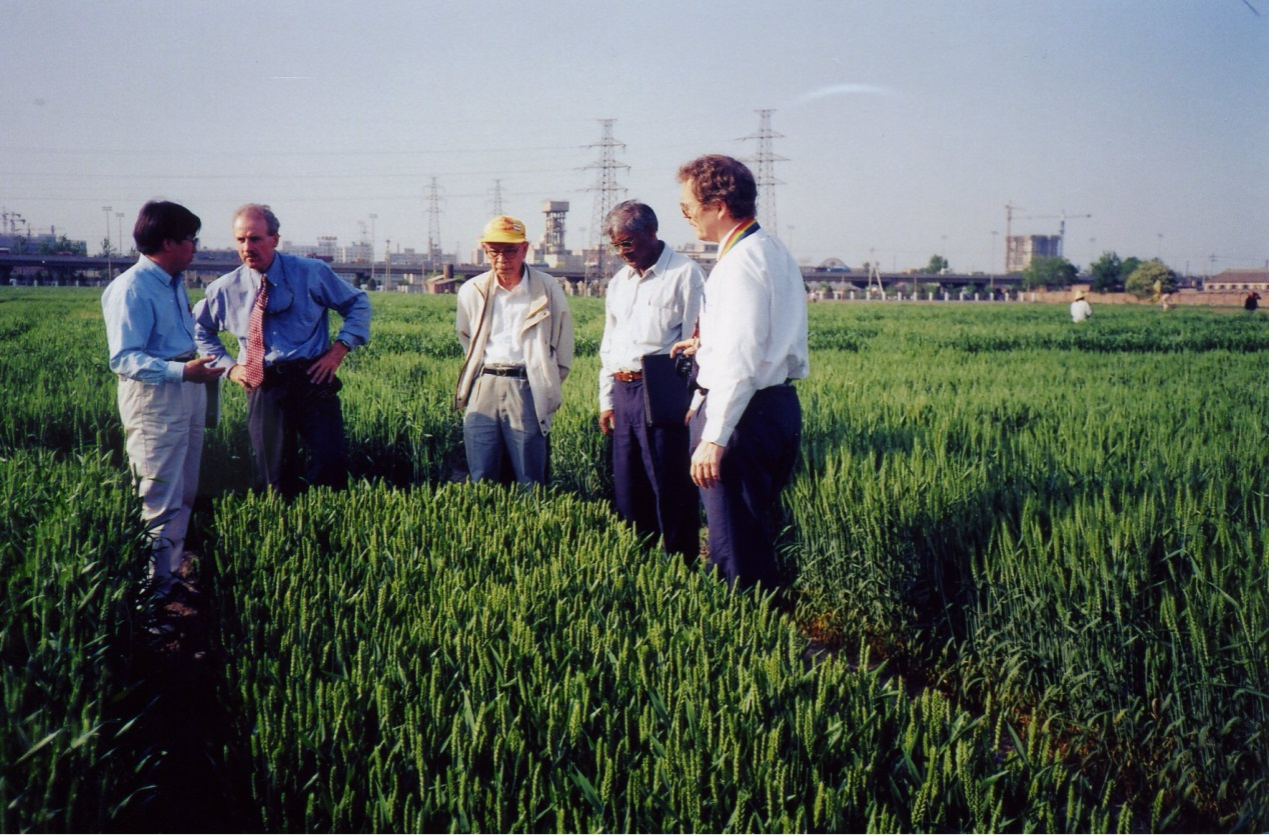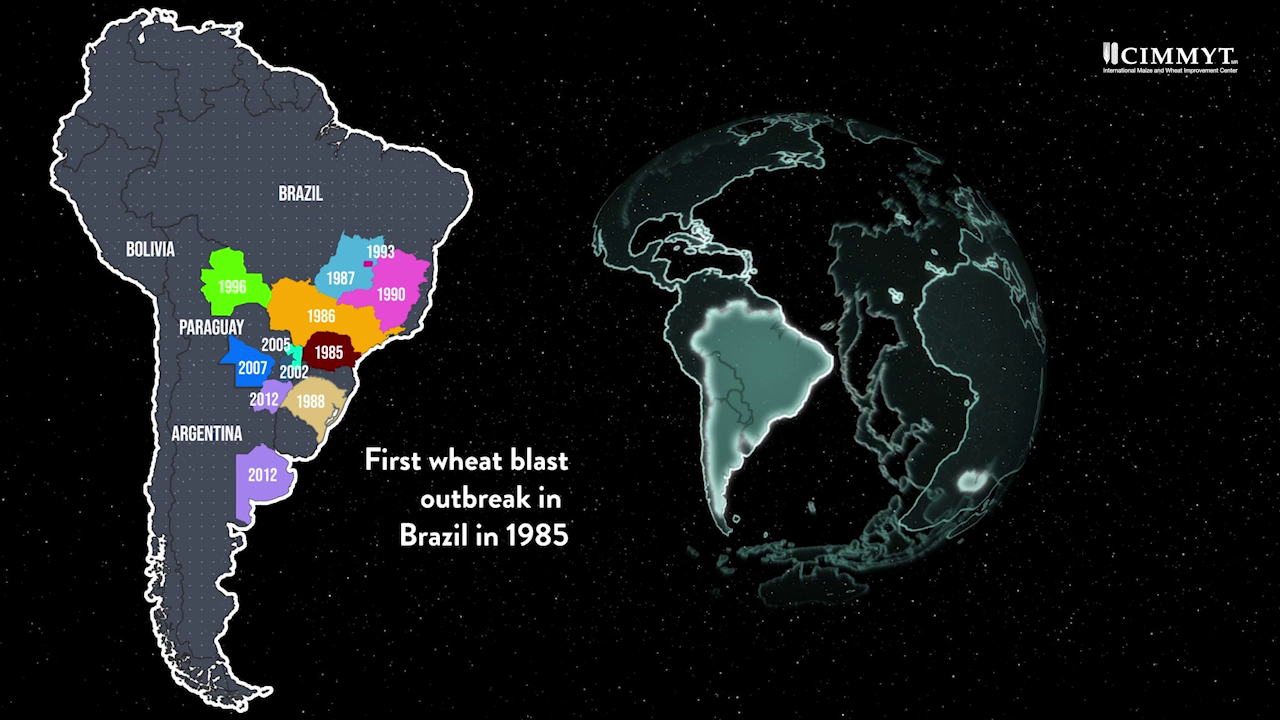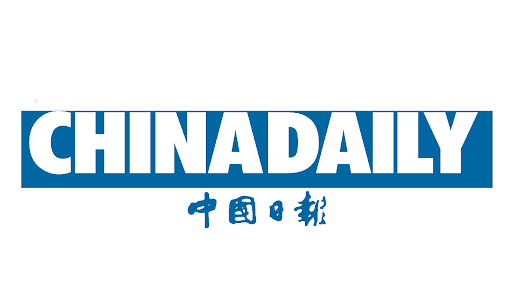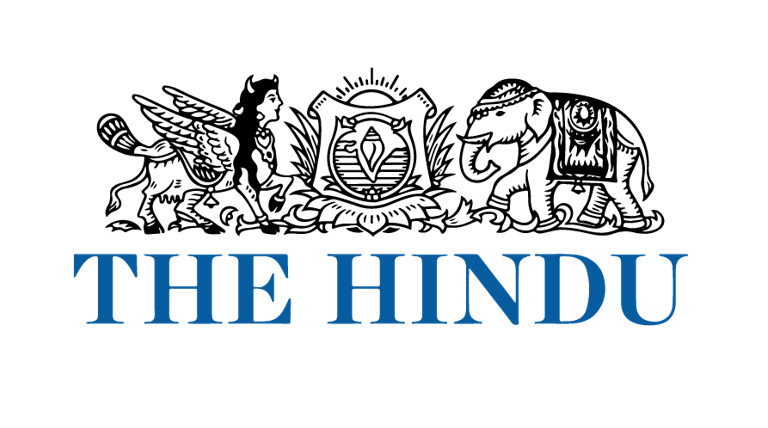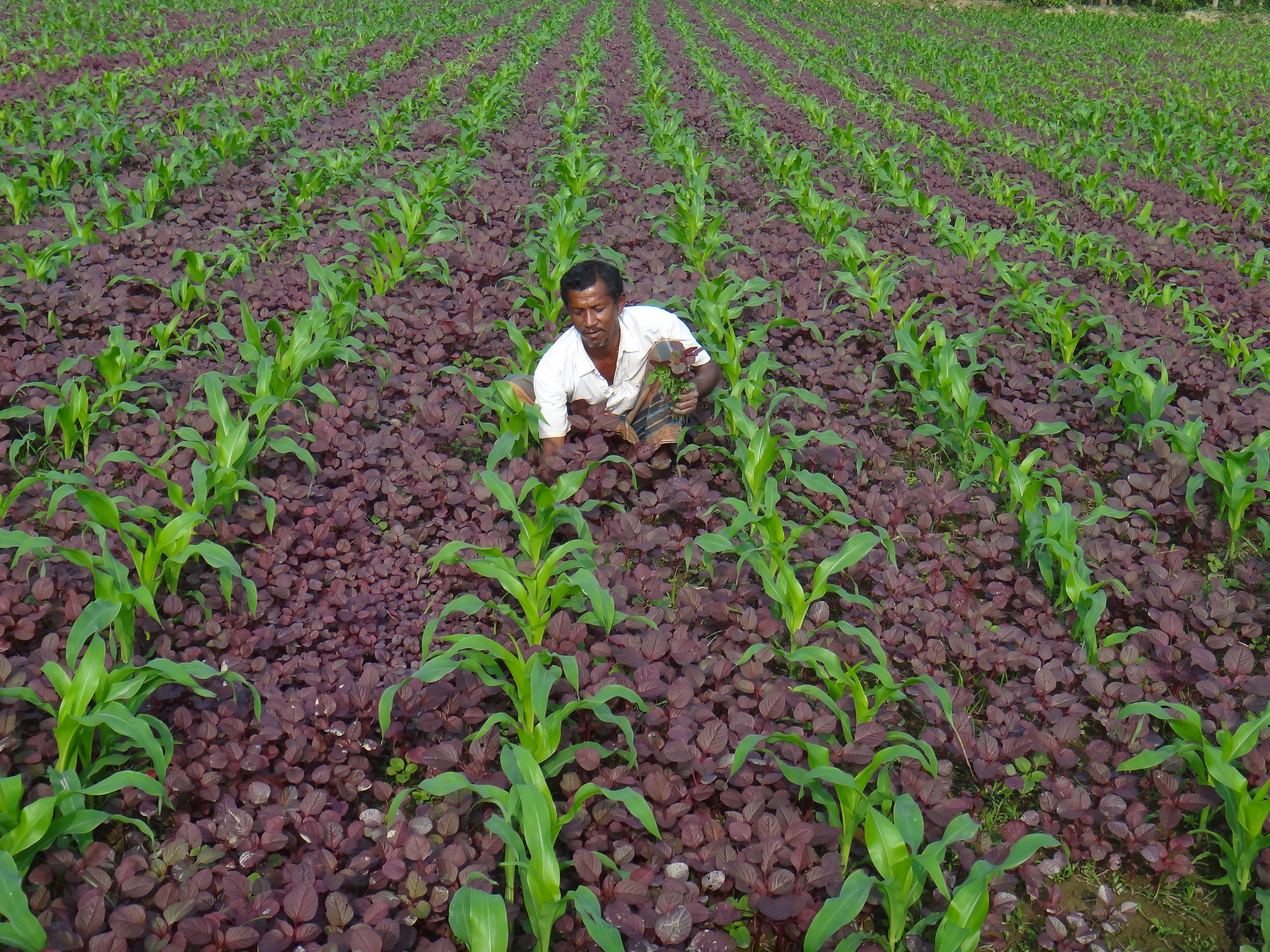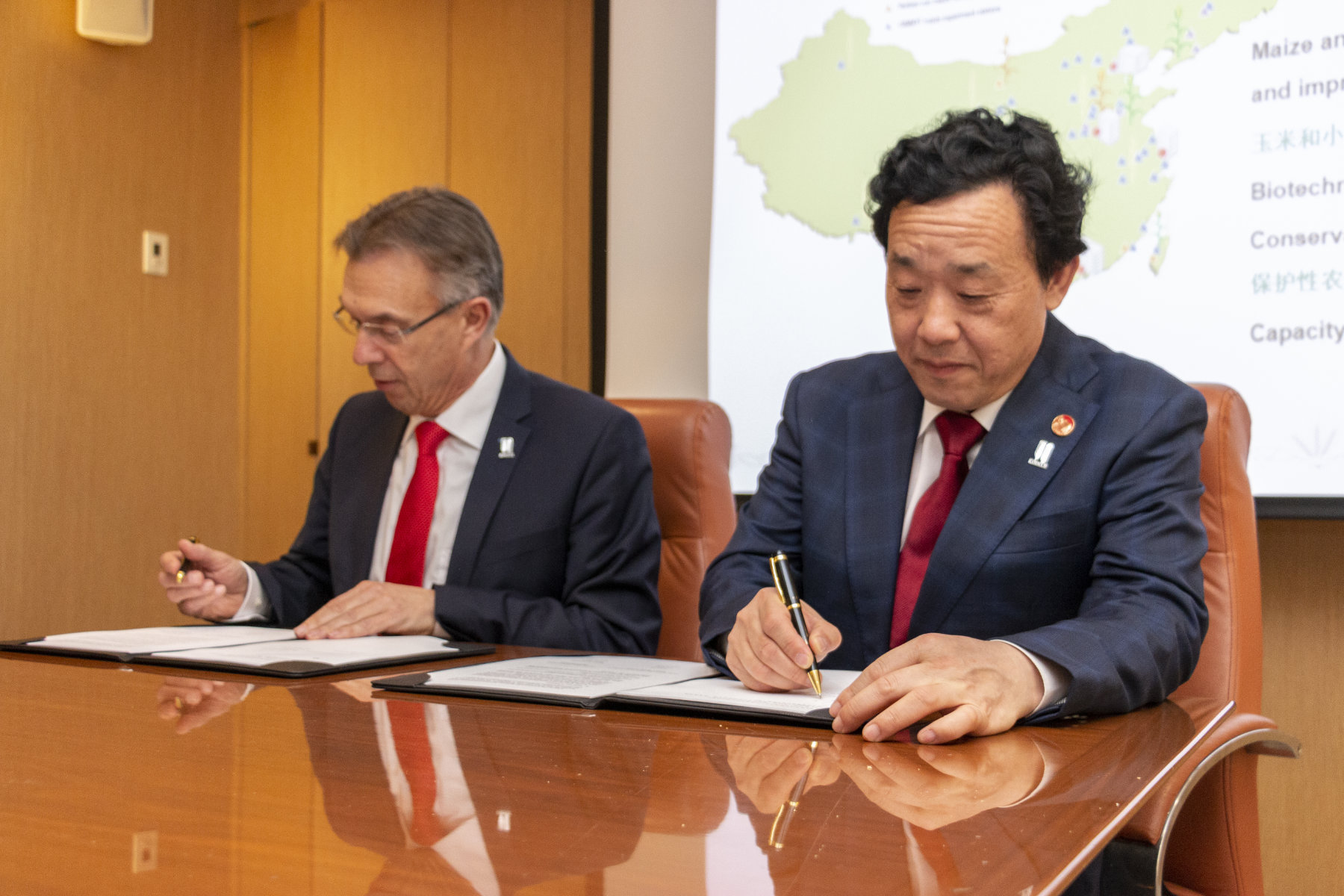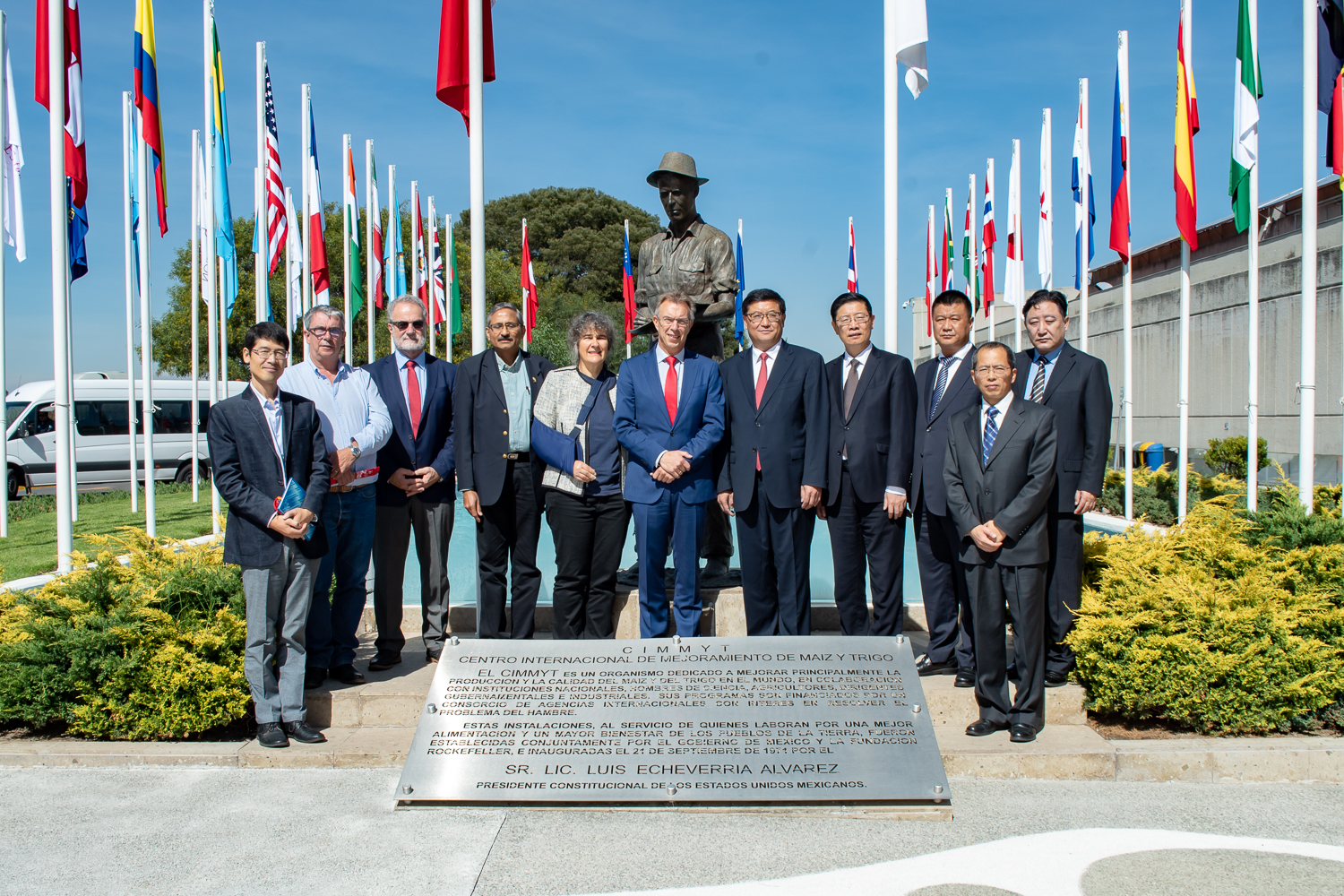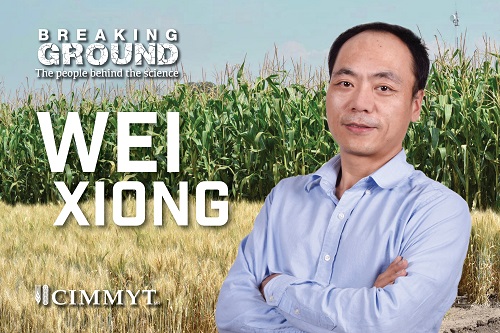China
In memory of Zhuang Qiaosheng
 Capacity development
Capacity development
Wheat breeder and former CIMMYT Board of Trustees member Zhuang Qiaosheng passed away at the age of 105.
Taming wheat blast
 Environmental health and biodiversity
Environmental health and biodiversity
Researchers point out the future of the disease, the ways to manage it and prevent it from spreading — within and across continents.
Floods highlight importance of food security
 Climate adaptation and mitigation
Climate adaptation and mitigation
Source: China Daily (22 Jul 2020)
CIMMYT-developed drought-and high temperature-tolerant maize varieties help strengthen resilience to weather extremes in China.
New international partnership to identify and develop resistance to dangerous wheat disease
 Nutrition, health and food security
Nutrition, health and food security
China-based CIMMYT-JAAS screening station aims for global impact in the fight against deadly Fusarium head blight.
Deadly Fall Armyworm threat here to stay
 Nutrition, health and food security
Nutrition, health and food security
Source: The Hindu (1 May 2019)
CIMMYT, USAID, ICRISAT and CGIAR have joined hands to address FAW threat in Asia.
Candidate for FAO leadership Qu Dongyu visits CIMMYT’s headquarters to sign MoU and strengthen collaboration
 Nutrition, health and food security
Nutrition, health and food security
China’s vice minister of agriculture and rural affairs, Qu Dongyu, visited the global headquarters of CIMMYT.
Climate insurance for farmers: a shield that boosts innovation
 Climate adaptation and mitigation
Climate adaptation and mitigation
New insurance products geared towards smallholder farmers can help them recover their losses, and even encourage investment in climate-resilient innovations.
CIMMYT scientist speaks at recent China congress
 Capacity development
Capacity development
Zhonghu He, CIMMYT distinguished scientists and country liaison office in China, was one of a small number of scientists invited to the recent 19th Congress of the Chinese Communist Party. He was selected based on his outstanding contributions in wheat research.
New study uncovers climate footprint of India’s favorite foods
 Climate adaptation and mitigation
Climate adaptation and mitigation
India needs to tackle greenhouse gas emissions from its rice and livestock sectors according to a study by CIMMYT and partners.
First blast resistant, biofortified wheat variety released in Bangladesh
 Innovations
Innovations
The first blast resistant wheat variety has been released in Bangladesh.
New Publications: Mitigating greenhouse gas emission from rising food production
A new study identifies the key ways to keep up with India’s rising food demand while minimizing greenhouse gas emissions.
